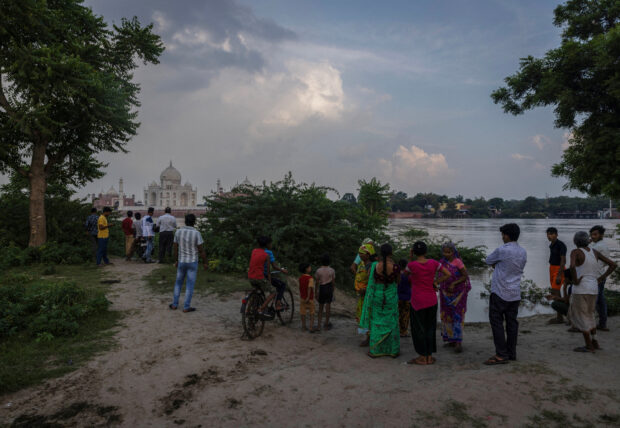After driest August, India could receive average rains in September

FILE PHOTO: People stand next to the flood waters in front of the historic Taj Mahal as the Yamuna river overflows following heavy rains, in Agra, India July 18, 2023. REUTERS/Adnan Abidi/File Photo
MUMBAI/NEW DELHI — India is likely to receive an average amount of rainfall in September, the country’s top weather official said on Thursday, after the driest August in more than a century.
The monsoon, vital for the $3 trillion economy, delivers nearly 70% of the rain India needs to water farms and refill reservoirs and aquifers.
Monsoon rains were 36% below average in August and overall summer rains were 10% lower than normal since the season began on June 1, Mrutyunjay Mohapatra, director-general of the India Meteorological Department, told a virtual news conference.
“There have been weak monsoon activities on most days in August and rains were rather weak in most parts of the country,” Mohapatra said. “Only some regions that were dry in June and July got better rains in August.”
Due to a weak start, monsoon rains were 9% below average in June, with rains rebounding to 13% above average in July. Summer rains again turned patchy in August.
Article continues after this advertisementEarlier this month Reuters reported that India was headed for its driest August in more than a century, partly due to the El Niño weather pattern.
Article continues after this advertisementEl Nino, a warming of waters that usually stifles rainfall over the Indian subcontinent, has emerged in the tropical Pacific for the first time in seven years.
After recording the weakest August, overall monsoon rains were 10% below average between June and August. The driest August has also set India up for its lowest monsoon rains in eight years.
When El Nino hit monsoon rains in 2015, India faced widespread drought.
Patchy monsoon rains raise concern about the output of summer crops such as rice.
The erratic distribution of monsoon rains has led India, the world’s largest rice exporter, to limit rice shipments, impose a 40% tax on onion exports, permit duty-free imports of pulse, and could potentially result in New Delhi banning sugar exports.